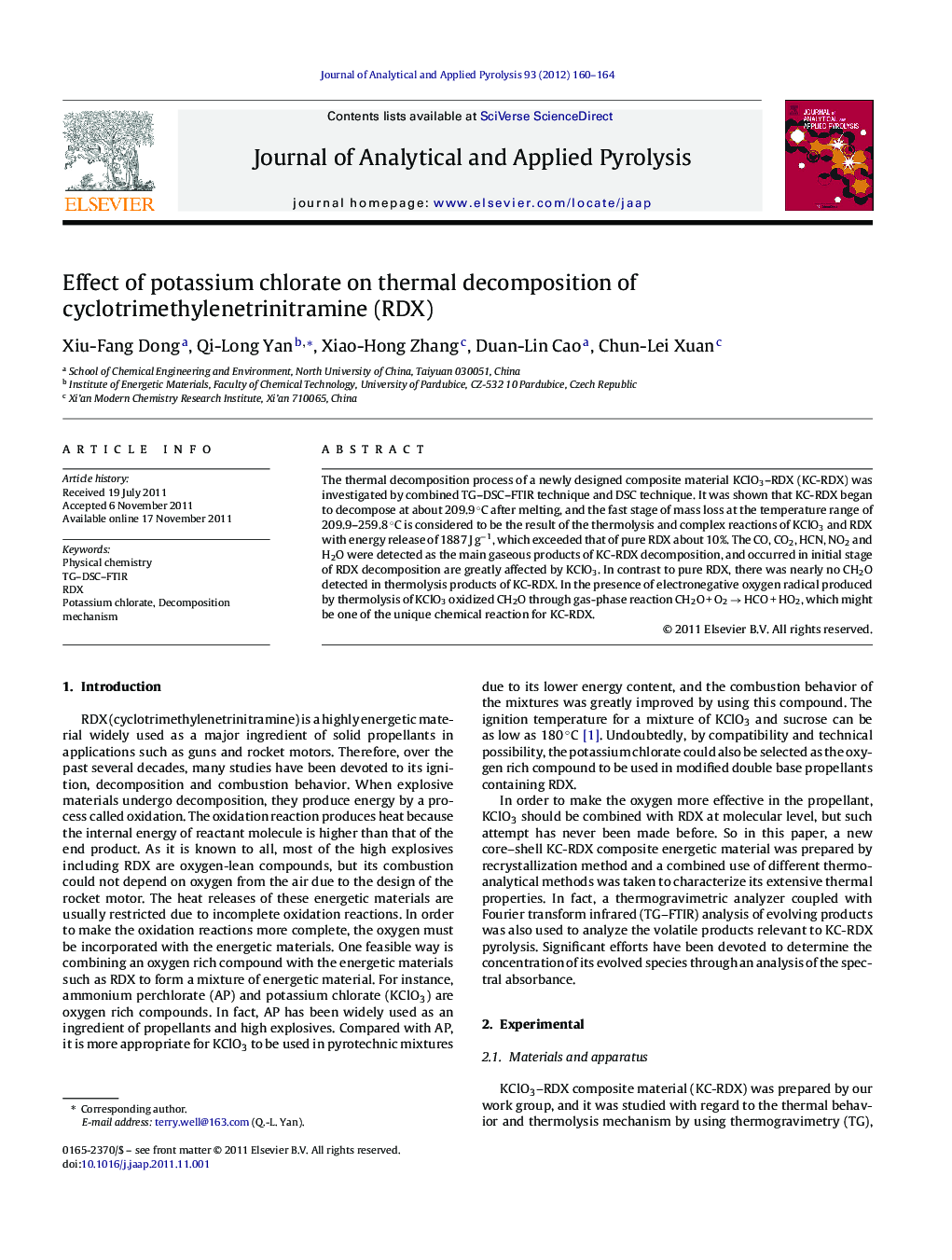| Article ID | Journal | Published Year | Pages | File Type |
|---|---|---|---|---|
| 1197680 | Journal of Analytical and Applied Pyrolysis | 2012 | 5 Pages |
The thermal decomposition process of a newly designed composite material KClO3–RDX (KC-RDX) was investigated by combined TG–DSC–FTIR technique and DSC technique. It was shown that KC-RDX began to decompose at about 209.9 °C after melting, and the fast stage of mass loss at the temperature range of 209.9–259.8 °C is considered to be the result of the thermolysis and complex reactions of KClO3 and RDX with energy release of 1887 J g−1, which exceeded that of pure RDX about 10%. The CO, CO2, HCN, NO2 and H2O were detected as the main gaseous products of KC-RDX decomposition, and occurred in initial stage of RDX decomposition are greatly affected by KClO3. In contrast to pure RDX, there was nearly no CH2O detected in thermolysis products of KC-RDX. In the presence of electronegative oxygen radical produced by thermolysis of KClO3 oxidized CH2O through gas-phase reaction CH2O + O2 → HCO + HO2, which might be one of the unique chemical reaction for KC-RDX.
